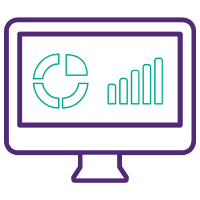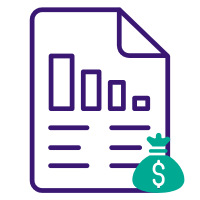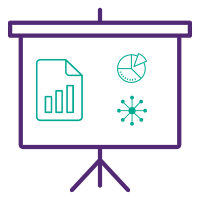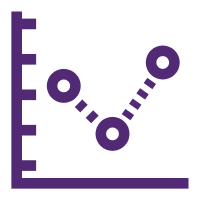Stock index trading explained
Defining stock market index trading can be very simple. In short, a stock index is a collection of stocks and the performance of these collections gives you an overview of how a specific part of the stock market is performing. The same explanation applies to
CFD indices as well.

For example, a technology stock index will show you how the tech market is performing. Indices are very popular because they provide information for a basket of stocks, not just one single stock. While it is true that these indices can't be traded directly, you have the ability to trade on the possible price movements of the indices.
There are many different types of indices available in the market, among which are:
- S&P 500
- Dow Jones Industrial Average
- FTSE 100
- Nikkei 225
- CAC 40
And this is not all, there are many more that you can find in the market. Trading indices do come with several advantages and disadvantages. One of the biggest advantages is that, while comparing stock trading vs index trading, indices can be a safer investment rather than investing directly into the shares of a certain company.
The main reason for this is that while the shares of individual companies can fall and cost you a lot, the fall in individual stocks might not have the same impact on you when you are trading indices that measure the performance of the whole sector.
As for the cons, one of the biggest ones is that indices trading is not that suitable for those looking for short-term turnovers.
List of the best stock indices
As we have already mentioned, there are many indices available worldwide for investors, but some are more popular than others. Below, we will discuss top indices for stock index futures trading.
S&P 500
S&P 500 is one of the most important and well-known stock market indexes that measures the performance of the 500 largest companies listed on the stock exchanges in the United States. The index includes companies such as Apple, Microsoft, Facebook, Amazon, Tesla, Johnson & Johson, and many others.
Historically, the index’s annual total return and annual growth rate since the 1930s has been around 9.8%. 70% of the time, the index posted annual increases.
After the stock market crash in 2020, the S&P 500 index fell as much as 20% in the first quarter of 2020, which was the worst quarter for the index since the 2008 stock market crash.
Following the decrease during the Covid-19 pandemic in 2020, S&P 500 was one of the first ones to recover. Soon after, the index even hit an all-time high, selling over 4,000 for the first time in history.
Dow Jones Industrial Average
The Dow Jones Industrial Average is another very popular stock market index that measures the stock performance of 30 large companies listed on the stock exchanges in the United States.
While talking about index trading on stocks, DJIA can't be ignored. It represents one of the biggest and second oldest indexes in the US. Investing in this index is possible via index funds as well as using derivatives such as options contracts and futures contracts.

Since there are just 30 companies on the list, large-scale changes happen to its components somewhat frequently. The first large-scale change in the list of companies happened in 1932 when eight stocks in the Dow were replaced. Another happened in 1997 when four companies were replaced in the list.
In 2020, during the Covid-19 pandemic, Salesforce, Amgen, and Honeywell were added to the Dow, which replaced ExxonMobil, Pfizer, and Raytheon Technologies. In November of 2020, the sales of the Dow broke above 30,000 level for the first time and closed the trading day on November 24 at 30,045.84.
FTSE 100
With a market cap of more than 1.8 trillion pounds, the Financial Times Stock Exchange 100 Index, FTSE 100, includes 100 companies listed on the London Stock Exchange with the highest market capitalization. The highest price of the index was recorded on May 22, 2018, when the index closed at 7,877.45.
There are a number of stock index trading strategies for trading FTSE 100, this involves either buying shares or ETFs of the index or trading the price movements of the FTSE through derivatives, just like with any other indexes.
Nikkei 225
Nikkei 225 index is a Japanese equivalent of the United States' S&P 500 and UK's FTSE 100. Also known as Nikkei Stock Average, this stock market index measures the performance of 225 large companies from the Tokyo Stock Exchange.
Among the developed markets, Nikkei 225 is known to be the most volatile because of the frequent price movements. It started 2013 near 10,600 and quickly peaked at 15,942 in May. However, after this, it shrank 10 percent quickly. By 2015, the index reached 20,000, which made it one of the fastest-growing stock market indexes in the world.

Because of the high volatility, Nikkei 225 is a little different from other indexes, which makes it very popular among traders.
CAC 40
CAC 40 is a benchmark French stock market index. It measures the performance of the 40 leading companies listed on Euronext Paris. The index hit the highest price point back in 2000, mainly due to the dot-com bubble, closing September 4 at 6,922.33.
As of January 2020, the market cap of the index was as much as €1.8 trillion.
DAX
The DAX is one of the largest and most popular indexes around the world. It is a blue chip stock market index that consists of the 30 biggest German companies listed on the Frankfurt Stock Exchange.
It was announced in 2020 that starting from 2021, the expansion would take place, increasing the DAX list from 30 to 40 members. The market cap of the DAX was over €1 trillion as of 2020.
Pros & Cons of trading indices
There are several advantages and disadvantages that come with investing in stock indexes. One of the advantages of stock indexes is that they provide an easier way to track the overall health of a certain market. By simply looking at one statistical measurement, it is possible to tell how the market is performing.
The historical data of the index movements can also provide investors some guidance to better understand how the markets have been influenced by different events in history.

Another huge advantage of indices trading is that it is considered to be less risky. The main reason for this is that instead of trusting only one company with your money, you are investing it in part of the market. Thanks to this, the negative performance of a certain company might not be as dramatically influential for you.
Because of this and many other reasons, many traders are using different types of stock market index trading strategies for trading indices every day.
There also are several disadvantages that investing in indices has. One of the biggest ones is that most of the indices tend to be less volatile, which can be a disadvantage for many. Because of low volatility, indexes are not the best option for those looking for short-term turnovers.